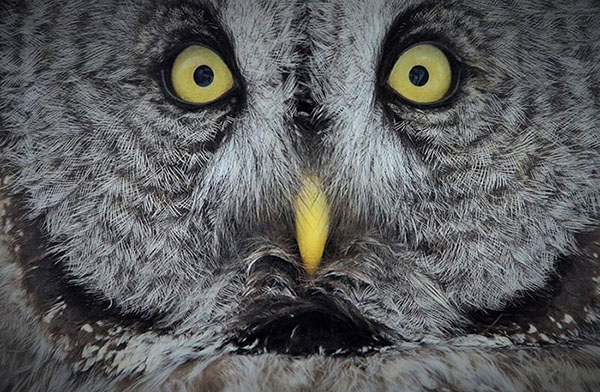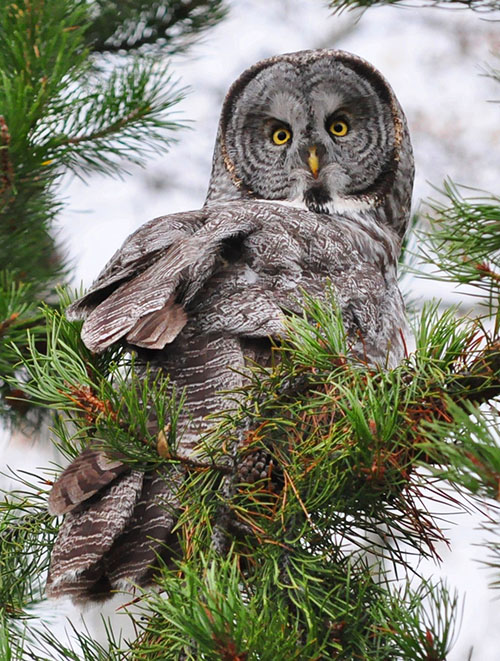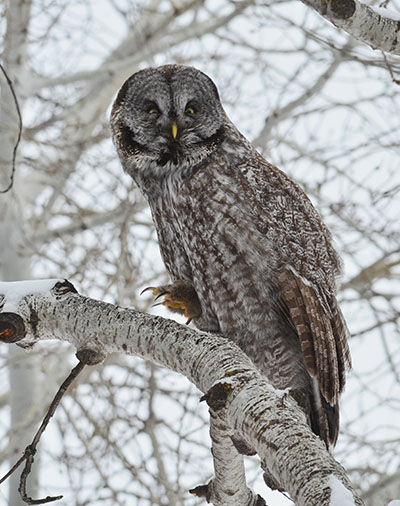Ghosts Galore
Published at | Updated at
Last month there were ghosts everywhere – black ghosts, white ghosts and Gray Ghosts –the blacks and whites are gone for the year, but the Gray Ghosts are still flying around. Even after the “Haunts of Harriman” is over, these ghosts, who are the Great Gray owls, have been seen flying around just south of and within the state park.
During my mountain travels in the last month I have seen loose family groups around Fog Butte, Bishop Mountain, Swan Lake and Harriman State Park in the Island Park area. East of Rexburg in the Mud Springs to mountains near Heise, I have seen them in the early morning and late evenings working the clear cuts of the recent timber sale on the state lands.
As the weather gets colder and the snow covers the ground, the Great Gray owls will be forced to hunt more. Some winters are sever enough to force them to migrate to the lower valley near Ririe, St. Anthony and Rexburg.
Great Grays eat a third of their weight in rodents each day. This requires using specialized techniques to harvest that much food. Even with their huge eyes, they hunt more by sound than by sight.
The key to their hunting success is the huge feathered discs around their eyes. These discs funnel faint sounds of rodents under matted grass or a foot of snow, to their ears. This ability allows them to hunt in areas where other predatory birds cannot during the winter months. Because of their success during the winter, Great Grays, especially the females, will actually build up reserve fat during the winter to carry them through the competitive summer months.
They like to hunt mostly in the early morning or late evening but will also hunt during the day and night when necessary. Over-cast days are a great time to locate them while they hunt mid-day. Their silent flight has earned them the nickname, “Gray Ghost.”
About 80 per cent of their diet consists of voles, but they will consume other rodents, including cottontail rabbits and squirrels, when necessary. As the vole population rises and falls, these nomadic birds of prey may have to travel hundreds of miles to find a substantial food source.
Great Gray owls are the tallest North American owl, but are not the heaviest. Both the Great Horned and Snowy owls usually outweigh them.
Nesting usually starts in March with nests built in a forest but near large clearings where the male can hunt for the setting female. The CRP fields in the Chester, Mud Springs and Canyon Creek areas are great habitat for them. By April, two or three fuzz balls are hatched and the dedicated mother protects them from the spring snowstorms and cold by rarely leaving the nest. The male will continue to feed her, but during food scarcity, a female may lose up to a third of her weight while nesting.
As you go about your fall and winter activities, watch for a gray ghost silently slicing through the trees or sitting on a power pole. Once it lands it will usually sit on a branch, allowing you to approach to see its beautiful costume with its yellow eyes and beak, contrasting with its grayness.

Living the Wildlife is brought to you by Yellowstone Teton Territory. Experience 7,500 square miles of untamed wilderness in Eastern Idaho's Yellowstone Teton Territory. Where majestic peaks meet endless adventure, your perfect outdoor escape is waiting. Start planning at YellowstoneTeton.com.







